Microsoft Dynamics 365 Finance MB310 Overview
Microsoft Dynamics 365 Finance MB310 Course Outline
Within this Microsoft training course, you will learn the following modules:
Module 1: Get Started with Dynamics 365 Finance
- Introduction
- Benefits of Dynamics 365 Finance
- Overview
- General Ledger
- Cash and Bank Management
- Tax
- Accounts Payable
- Accounts Receivable
- Credit and Collections
- Budgeting
- Fixed Assets
- Cost Accounting
- Electronic Invoicing
- Lab - Explore Dynamics 365 Finance
Module 2: Configure Currencies in Dynamics 365 Finance
- Introduction
- Set Up Currencies and Conversions
- Configure and Import Currency Exchange Rates
- Lab - Import Exchange Rates
Module 3: Create Fiscal Calendars, Years, and Periods in Dynamics 365 Finance
- Introduction
- Fiscal Calendars, Fiscal Years, and Periods
- Create Fiscal Calendars, Years and Periods
- Select a Fiscal Calendar
- Define Budget Cycle Time Spans
- Maintain Periods for your Organisation
- Create Date Intervals
- Lab - Work with the Fiscal Calendar, Year, And Periods
Module 4: Configure Chart of Accounts in Dynamics 365 Finance
- Introduction
- Plan Your Chart of Accounts
- Multiple Chart of Accounts
- Set Up Chart of Accounts
- Main Account Categories
- Main Account Information
- Allocation Terms
- Main Account Validation Options
- Main Account Closing Options
- Financial Tags
- Accounts for Automatic Transactions
- Define and Configure Financial Dimensions
- Create a Custom Financial Dimension
- Create an Entity-Backed Financial Dimension
- Activate and Delete Financial Dimensions
- Default Dimension Values
- Derived Dimensions
- Configure Financial Dimension Templates and Sets
- Define and Configure Account Structures and Advanced Rules
- Ledger Account Aliases
- Lab - Create a Main Account Category in the Chart of Accounts, and an Advanced Rule Structure
Module 5: Set Up Ledgers and Journals in Dynamics 365 Finance
- Introduction
- Understand the Different Types of Journals and their Setup
- Describe Use Cases for Periodic Journals
- Configure Ledger and Journal Setup
- Discover Options for Implementing Voucher Numbers in Journals
- Set Up Journal Approvals
- Configure and Use Journals
- Reverse Journal Posting
- Set Up Batch Transfer Rules
- Lab - Configure Ledger and Journal Setup
Module 6: Perform General Ledger Daily Procedures in Dynamics 365 Finance
- Introduction
- Using Balance Control Accounts
- Process a Journal Entry
- Work with General Ledger Processes
- Ledger Settlements
- Create Templates to Edit Journals in Microsoft Excel
- Create Voucher Templates
- Set Up Journal Controls
- Exercise - Create and Use a Voucher Template
Module 7: Intercompany Accounting in Dynamics 365 Finance
- Introduction
- Set Up Intercompany Accounting
- Post Intercompany Journals
- Trace an Intercompany Entry
- Lab - Set Up and Use Intercompany Accounting
Module 8: Configure Ledger Allocations and Accruals in Dynamics 365 Finance
- Introduction
- Configure and Apply Accrual Schemes
- Configure Ledger Allocation Rules
- Exercise - Configure and Use Accrual Schemes
- Exercise - Configure and Test Ledger Allocation Rules
Module 9: Configure and Perform Periodic Processes in Dynamics 365 Finance
- Set Up the Financial Period Workspace and Closing Schedule
- Bank Reconciliations
- Year-End 1099 Reporting
- Run Foreign Currency Revaluation Processes
- Process End of Year Close
- Perform Financial Consolidations
Module 10: Work with Analytics and Reporting in Finance and Operations Apps
- Introduction
- Understand Different Types of Reports and Inquiries
- Financial Reporting
- Find Inquiries and Reports
- Generate and Consume Inquiries and Reports
- Configure Finance and Operations Apps for Microsoft Power Platform
- Lab - Work with Reports
Module 11: Configure Cash and Bank Management in Dynamics 365 Finance
- Introduction
- Understand Bank Transaction Types and Groups
- Set Up Cash and Bank Management Parameters
- Set Up the Single Euro Payments Area (SEPA) Direct Debit Mandate
- Set Up International Bank Account Number (IBAN) Structures
- Configure Banks and Bank Check Layout
- Set Up Bank Accounts for Customers
- Set Up Bank Accounts for Vendors
- Deposit and Refund Checks
- Understand Cash Flow Forecast and Reports
- Configure Cash Flow Forecasting
- Lab - Work with Cash and Bank Management
Module 12: Configure Taxes in Dynamics 365 Finance
- Introduction
- Configure Ledger Posting Groups
- Exercise - Set Up Ledger Posting Groups for Sales Tax
- Configure Sales Tax Authorities
- Exercise - Set Up Sales Tax Authorities
- Configure Sales Tax Settlement Periods
- Exercise - Set Up Sales Tax Settlement Periods
- Create Sales Tax Codes
- Configure Sales Tax Groups and Item Sales Tax Groups
- Exercise - Set Up Sales Tax Codes and Sales Tax Groups
- Withholding Tax
- Sales Tax Exemption
- Conditional Sales Tax
- Sales Tax on Transactions
- Set Up Sales Tax Reporting Codes
- Exercise - Set Up Sales Tax Reporting Codes and Withholding Tax
- Exercise- View Posted Sales Tax Transactions
- Prepare Periodic Filings
Module 13: Configure Accounts Receivable in Dynamics 365 Finance
- Introduction
- Payment Schedule
- Terms of Payment and Payment Days
- Cash Discounts
- Payment Fees
- Set Up the Credit Card Payment Service
- Methods of Payment and Payment Control
- Set Up a Payment Calendar and Payment Calendar Rules
- Create and Maintain Customers
- Set Up Customer Posting Profiles
- Configure Accounts Receivable Charges
- Lab - Configure Customer Posting Profiles and Create a New Customer
Module 14: Perform Accounts Receivable Daily Procedures in Dynamics 365 Finance
- Introduction
- Create Free Text Invoices
- Recurring Free Text Invoices
- Create and Handle Payments of Customer Invoices for Sales Orders
- Settle Transactions and Undo Settlements
- Revenue Recognition Overview
- Define Revenue Schedules
- Define Revenue Prices
- Set Up Bundle Items
- Exercise - Create and Process A Free Text Invoice
- Exercise - Work with Invoices from Sales Orders
- Exercise - Process an Invoice and Settle it Against a Payment
Module 15: Configure Credit and Collections in Dynamics 365 Finance
- Introduction
- Configure Accounts Receivables for Credit and Collections
- Configure Credit and Collections Components
- Set Up Interest Rates for an Interest Code
- Waive, Reinstate, or Reverse Interest Fees
- Set Up and Manage Collection Letters
- Exercise - Set Up Credit and Collections in Finance
- Exercise - Create a Write-Off Journal for a Customer
Module 16: Process Credit and Collections in Dynamics 365 Finance
- Introduction
- Customer Account Statement
- Working with Collections
- Manage Customer Credit and Collections
- Credit Management
- Lab - Work with Credit and Collections
Module 17: Configure Accounts Payable in Dynamics 365 Finance
- Introduction
- Configure the Payment Schedule
- Configure Terms of Payment and Payment Days
- Configure Cash Discounts
- Set Up Payment Fees
- Create Vendor Groups
- Set Up Accounts Payable Posting Profiles
- Create Vendors
- Set Up Methods of Payment for Vendors
- Set Up Electronic Payment Formats
- Configure Accounts Payable Charges
- Configure and Use Positive Pay
- Lab - Configure Accounts Payable Components
Module 18: Perform Accounts Payable Daily Procedures in Dynamics 365 Finance
- Introduction
- Understand Invoice Types in Accounts Payable
- Incoming Invoice Payments
- Record Vendor Invoices
- Modify Due Dates and Discount Dates
- Work with Cash Discounts from Vendors
- Create Vendor Payments
- Reverse a Vendor Payment
- Manage Prepayments and Prepayment Invoices
- Exercise - Record an Invoice
- Exercise - Record a Vendor Invoice That is Not Associated with a Purchase Order
- Exercise - Process a Vendor Payment by Using A Payment Journal
Module 19: Work with Accounting Distributions, Invoice Validations and Settlements in Dynamics 365 Finance
- Introduction
- Settle Transactions and Undo Settlements
- Distribute Funds by Using Accounting Distributions
- Configure Invoice Validation Policies
- Three-Way Matching Policies
- Accounts Payable Invoice Matching
- Invoice Totals Matching
- Two-Way, Price Totals Matching
- Two-Way, Net Unit Price Matching
- Three-Way Matching
- Vendor Invoice Workflow
- Charges Matching
- Lab - Work with Accounting Distributions, Invoice Validations, and Settlements
Module 20: Get Started with Expense Management in Dynamics 365 Project Operations
- Introduction
- Plan Expense Management
- Intercompany Expenses
- Financial Management
- Per Diems
- Journals and Accounts
- Payment Methods
- Taxes
- Policies
- Expense Categories and Shared Categories
- Map Expense Categories to a Main Account
Module 21: Set Up and Configure Expense Management in Dynamics 365 Project Operations
- Introduction
- Expense Management Workspace
- Expense Management Parameters
- Expense Management Workflows
- Expense Report Policies and Per Diem Rules
- Evaluate Policies by Using Audit Workbench Cases
- Set Up Mileage Expense Options
- Intercompany Expenses
- Personal Expenses on an Expense Report
- Set Up Credit Card Transaction Processing and Import Credit Transactions
- Expense Receipt Processing
- VAT Recovery
Module 22: Create and Process Expense Reports in Dynamics 365 Project Operations
- Introduction
- Create an Expense Report
- Intercompany Expenses
- Itemise Expenses by Line
- Distribute an Expense
- Add Guests
- Attach Receipts and Documents to an Expense Report
- Submit an Expense Report to a Workflow
- Approve an Expense Report
- Delegate an Expense Report
- Post an Expense Report
- Reporting Options
- Lab – Create an Expense Report and Submit it to a Workflow
Module 23: Work with Travel Requisitions in Dynamics 365 Project Operations
- Introduction
- Create a Travel Requisition
- Exercise - Create a Travel Requisition
- Approve a Travel Requisition
- Create a Cash Advance
- Update a Cash Advance
Module 24: Configure and Use Basic Budgeting and Budget Control in Dynamics 365 Finance
- Introduction
- Planning for Basic Budgeting and Budget Control
- Budgeting Methodologies
- Basic Budgeting Overview
- Configure Basic Budgeting
- Use Workspaces and Inquiry Pages to Track Budget Vs. Actuals
- Budget Control Overview
- Configure Budget Control
- Configure Budget Control (Cont.)
- Create and Manage Budget Register Entries
- Use Inquires and Reports for Budget Analysis
- Implement a Budget Register Workflow
- Exercise - Configure Basic Budgeting Components
- Exercise - Configure Budget Control Components
- Exercise - Create a Budget Register Entry
Module 25: Configure and Use Budget Planning in Dynamics 365 Finance
- Introduction
- Configure Budget Planning Components
- Exercise - Configure Budget Planning, Create, and Use a Planning Process
Module 26: Configure Fixed Assets Management in Dynamics 365 Finance
- Introduction
- Fixed Assets and Current Assets
- Accounting for Fixed Assets
- Relationships Between Fixed Assets Components
- Configure Fixed Assets Components
- Derived Books
- Enable Fixed Asset Integration
- Fixed Asset Transaction Options
- Demonstration - Create a Fixed Asset
- Lab - Work with Fixed Assets
Module 27: Manage Fixed Assets in Dynamics 365 Finance
- Overview
- Scenario - Customer Requirements for Fixed Assets
- Set Up and Create Fixed Assets
- Set Up Acquisitions
- Acquire Assets Through Procurement
- Manual and Automatic Methods to Create Fixed Assets
- Transfer a Fixed Asset
- Set Up Fixed Asset Groups
- Split a Fixed Asset
- Update Fixed Asset Information
- Fixed Assets Roll Forward Report
- Depreciation
- Dispose and Lend Fixed Assets
- Sell a Fixed Asset by Using a Free Text Invoice
- Dispose of Fixed Assets as Scrap
- Estimate and Eliminate a Project to a Fixed Asset
- Asset Budgeting
- Lab - Manage Fixed Assets


Who should attend this Microsoft Dynamics 365 Finance MB310 Course?
The MB310 Course focuses on providing professionals with the knowledge and skills required to utilise the financial management capabilities of the Dynamics 365 Finance application. It can be beneficial for professionals, including:
- Financial Managers
- Accountants
- Financial Analysts
- Business Analysts
- ERP Project Managers
- IT Managers
- Consultants
Prerequisites of the Microsoft Dynamics 365 Finance MB310 Course
There are no formal prerequisites for this Microsoft Dynamics 365 Finance MB310 Course. However, having a basic knowledge of ERP and CRM concepts can be beneficial for delegates.
Microsoft Dynamics 365 Finance MB310 Course Overview
The Microsoft Dynamics 365 Finance MB310 Course offers comprehensive training on utilising Dynamics 365 for financial management and accounting tasks. It covers essential concepts, tools, and techniques for managing financial operations, budgets, and reporting within organisations.
Finance, accounting, and auditing professionals must master Dynamics 365 Finance to streamline processes and enhance decision-making. Mastery of Dynamics 365 Finance enables efficient management of financial tasks, accurate reporting, and informed decision-making, ensuring optimal financial performance and compliance with regulatory requirements.
This 4-day training by the Knowledge Academy equips delegates with practical skills and knowledge in utilising Dynamics 365 for Finance. Through interactive sessions and real-world examples, participants will learn to manage financial transactions, create budgets, and generate financial reports.
Course Objectives
- To understand the key features and functionalities of Dynamics 365 for Finance
- To learn to manage financial transactions and accounts efficiently using Dynamics 365
- To explore budgeting and forecasting capabilities in Dynamics 365 Finance
- To gain insights into financial reporting and analysis tools
- To prepare for the Microsoft Dynamics 365 Finance certification exam
Upon completion, participants will be proficient in leveraging Dynamics 365 for Finance to streamline financial operations, improve financial visibility, and support informed decision-making within their organisations.


What’s included in this Microsoft Dynamics 365 Finance MB310 Course?
- World-Class Training Sessions from Experienced Instructors
- Digital Delegate Pack


Why choose us
Ways to take this course
Experience live, interactive learning from home with The Knowledge Academy's Online Instructor-led Microsoft Dynamics 365 Finance MB310. Engage directly with expert instructors, mirroring the classroom schedule for a comprehensive learning journey. Enjoy the convenience of virtual learning without compromising on the quality of interaction.
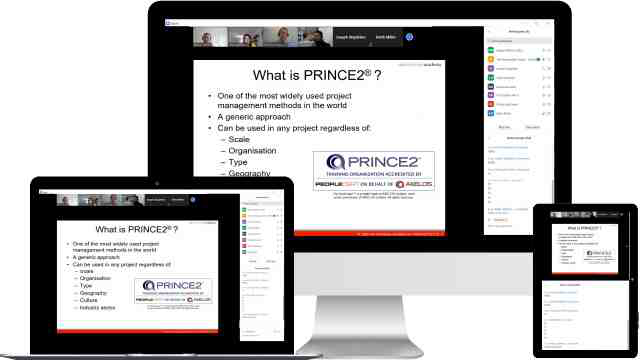
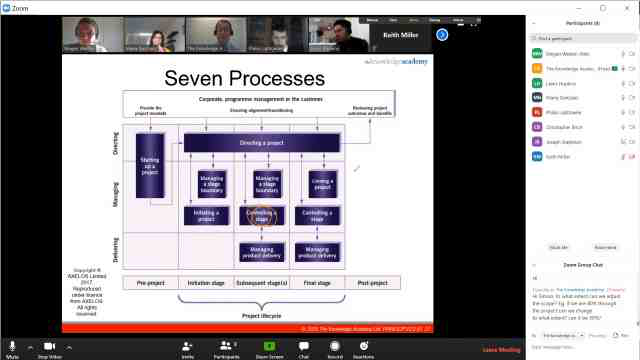
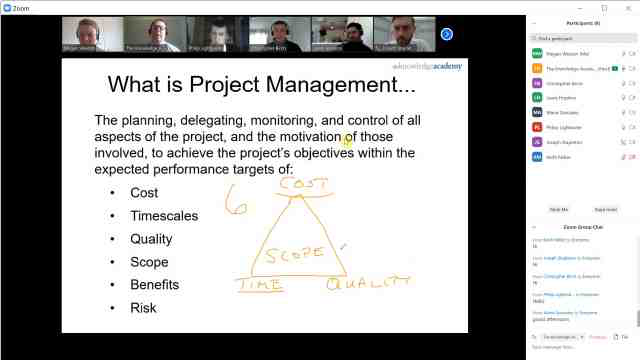
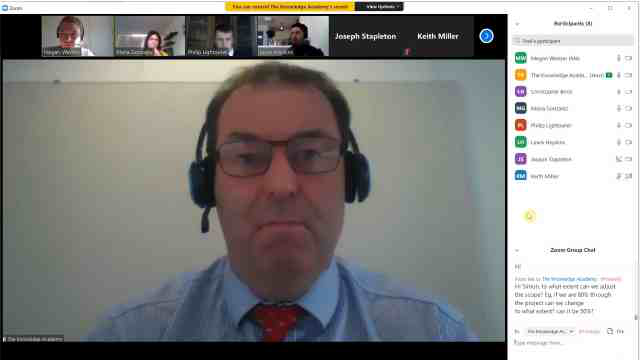
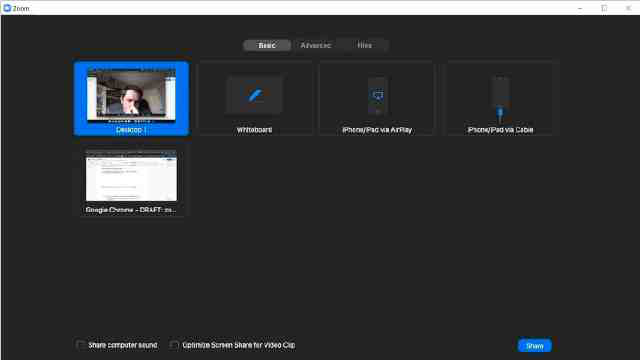
Unlock your potential with The Knowledge Academy's Microsoft Dynamics 365 Finance MB310, accessible anytime, anywhere on any device. Enjoy 90 days of online course access, extendable upon request, and benefit from the support of our expert trainers. Elevate your skills at your own pace with our Online Self-paced sessions.
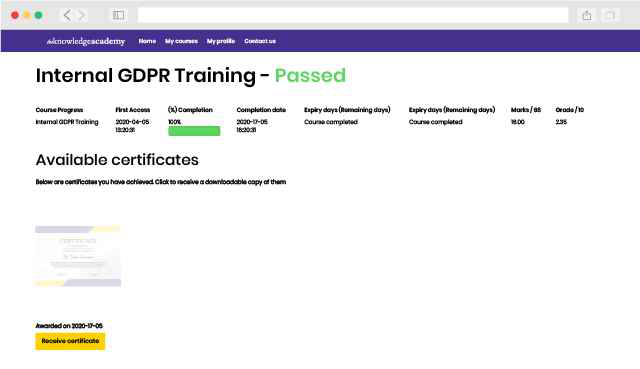
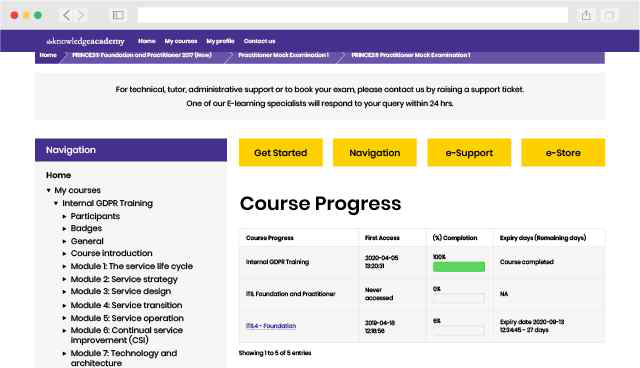
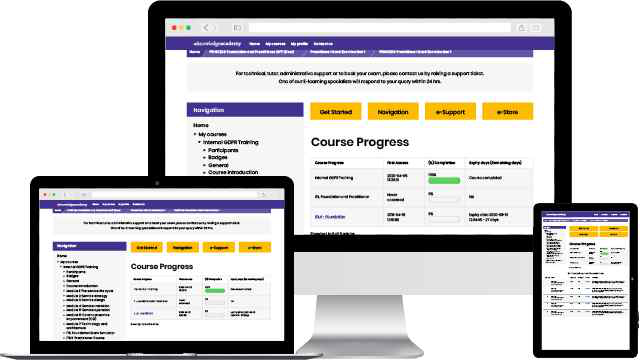
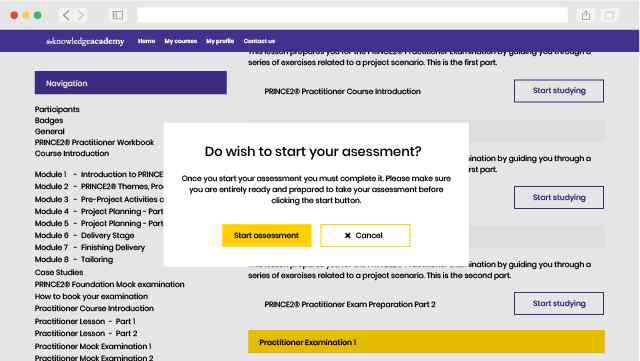
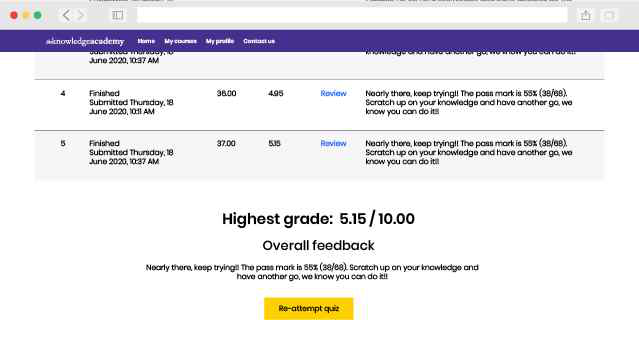
Experience the most sought-after learning style with The Knowledge Academy's Microsoft Dynamics 365 Finance MB310. Available in 490+ locations across 190+ countries, our hand-picked Classroom venues offer an invaluable human touch. Immerse yourself in a comprehensive, interactive experience with our expert-led Microsoft Dynamics 365 Finance MB310 sessions.

Highly experienced trainers
Boost your skills with our expert trainers, boasting 10+ years of real-world experience, ensuring an engaging and informative training experience

State of the art training venues
We only use the highest standard of learning facilities to make sure your experience is as comfortable and distraction-free as possible

Small class sizes
Our Classroom courses with limited class sizes foster discussions and provide a personalised, interactive learning environment

Great value for money
Achieve certification without breaking the bank. Find a lower price elsewhere? We'll match it to guarantee you the best value
Streamline large-scale training requirements with The Knowledge Academy’s In-house/Onsite Microsoft Dynamics 365 Finance MB310 at your business premises. Experience expert-led classroom learning from the comfort of your workplace and engage professional development.

Tailored learning experience
Leverage benefits offered from a certification that fits your unique business or project needs

Maximise your training budget
Cut unnecessary costs and focus your entire budget on what really matters, the training.

Team building opportunity
Our Microsoft Dynamics 365 Finance MB310 offers a unique chance for your team to bond and engage in discussions, enriching the learning experience beyond traditional classroom settings

Monitor employees progress
The course know-how will help you track and evaluate your employees' progression and performance with relative ease
What our customers are saying
Microsoft Dynamics 365 Finance MB310 FAQs

Why choose us
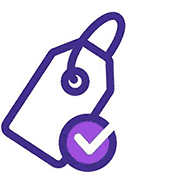
Best price in the industry
You won't find better value in the marketplace. If you do find a lower price, we will beat it.
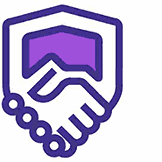
Trusted & Approved
Microsoft Dynamics 365 Training

Many delivery methods
Flexible delivery methods are available depending on your learning style.

High quality resources
Resources are included for a comprehensive learning experience.




"Really good course and well organised. Trainer was great with a sense of humour - his experience allowed a free flowing course, structured to help you gain as much information & relevant experience whilst helping prepare you for the exam"
Joshua Davies, Thames Water



 Back to course information
Back to course information
Microsoft Dynamics 365 Finance Functional Consultant Associate
Save upto 40%Included courses:
Microsoft Dynamics 365 Finance MB310AUD4795
Retired : Microsoft Dynamics 365 Core Finance and Operations MB300AUD2995
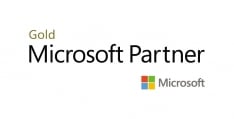

Total without package: AUD7790
Package price: AUD4695 (Save AUD3095)
Limited budget?
 If you miss out, enquire to get yourself on the waiting list for the next day!
If you miss out, enquire to get yourself on the waiting list for the next day!












 If you wish to make any changes to your course, please
If you wish to make any changes to your course, please

